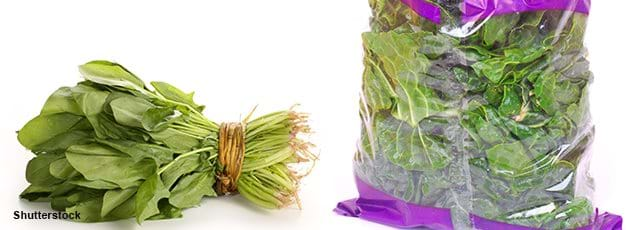Consumers Cut Back on Convenience but not Necessarily Quantity, When Incomes Fall

During a recession, consumers tend to reduce expenditures, including food spending. In the 2007-09 recession, inflation-adjusted spending on food declined as consumers curbed their eating out and economized in the grocery store (see 'Food Spending Adjustments During Recessionary Times' in this issue).
Exactly which foods or food characteristics consumers cut back on has ramifications for their health and for the food industry. ERS researchers have found that convenience is one food characteristic for which recession-constrained consumers will reduce expenditures. Specifically, in one recent study, researchers found that sales of bagged leafy greens decreased relative to sales of unpackaged leafy greens when income levels fell.
The U.S. leafy green market provides a good example of the tradeoff between convenience and price. The marketing of vegetables has undergone radical changes in the past 20 years with the introduction of packaged, prewashed vegetables sold in either bags or plastic containers. The convenience to consumers of prepackaged vegetables, particularly leafy greens, includes time savings from not having to sort, wash, dry, or chop. These time savings come at a price. Packaged vegetables typically cost more than their conventional counterparts. For example, in 2006, washed packaged leaf and baby spinach cost $3.32 per pound, while loose or bunched random-weight spinach sold for $1.05 per pound. Despite these higher prices, prepared and ready-to-eat bagged leafy green products, including salad mixes, accounted for more than half of all retail leafy green purchases in 2009.
To look at the effect of changing income levels on leafy green purchases, ERS researchers analyzed monthly disposable personal income and monthly retail purchases of bunches of spinach, heads of various types of lettuce, and bagged leafy greens in 2004-09. They found that changes in the level of disposable personal income have an almost immediate impact on the share of bagged leafy greens. Specifically, a 1-percent increase in income typically leads to a 1.2-percent increase in bagged leafy greens' share of total leafy green purchases, and an income decrease leads to a similar decline in the bagged share. This suggests that a sustained rise in income would slowly continue the trend toward greater reliance on more convenient produce products. Conversely, a sustained recession would dampen or reverse the trend.
Interestingly, the researchers did not find evidence that shortrun changes in disposable personal income influence the overall quantity of leafy greens purchased. The same results were observed after adjusting the purchased quantities to ensure that all items were measured according to the same consumable weight basis. These findings show that consumers, in regard to leafy greens, sacrifice convenience before quantity in balancing food budgets.
'Is it Food Quality or Quantity that Responds to Changing Income?', Applied Economic Perspectives and Policy, December 2011, Vol. 33, No. 2, pp. 205-221.

